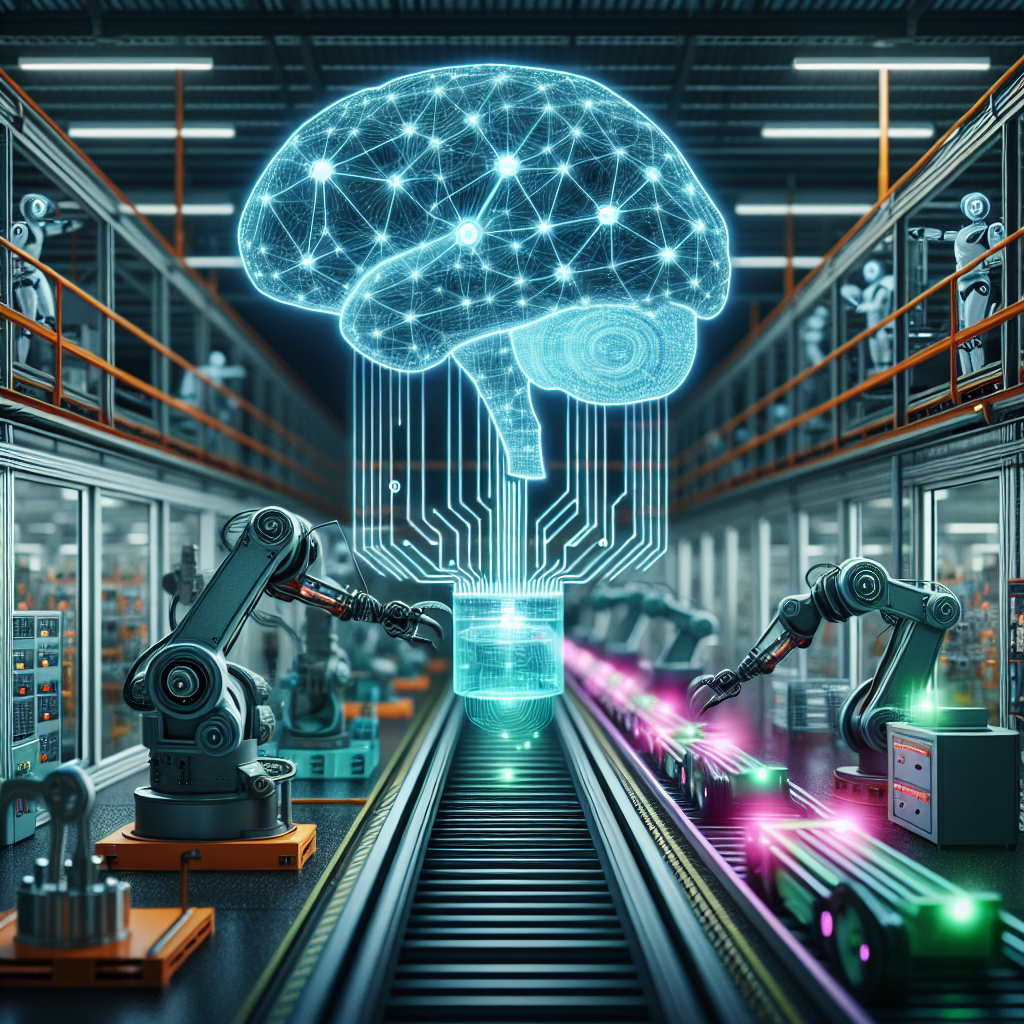In the manufacturing industry, predictive maintenance is a key strategy for minimizing downtime, reducing costs, and increasing overall efficiency. By leveraging artificial intelligence (AI) automation, manufacturers can take their predictive maintenance efforts to the next level, maximizing the benefits of this proactive approach to equipment maintenance.
AI automation refers to the use of artificial intelligence algorithms and machine learning techniques to automate various tasks and processes. When applied to predictive maintenance in manufacturing, AI automation can help identify potential equipment failures before they occur, allowing manufacturers to take preemptive action to prevent costly downtime.
One of the key benefits of leveraging AI automation for predictive maintenance is the ability to analyze vast amounts of data in real-time. In a manufacturing environment, equipment generates a tremendous amount of data that can be used to predict when maintenance is needed. AI algorithms can sift through this data, identifying patterns and anomalies that may indicate a potential issue with a piece of equipment.
By analyzing data from sensors, equipment logs, and other sources, AI automation can predict when a machine is likely to fail and alert maintenance personnel to take action. This proactive approach allows manufacturers to schedule maintenance during planned downtime, minimizing the impact on production and reducing the likelihood of unexpected breakdowns.
Another benefit of AI automation for predictive maintenance is the ability to optimize maintenance schedules. Traditional maintenance approaches often rely on fixed schedules, such as performing maintenance on a machine every 6 months. However, this approach can be inefficient, as maintenance may be performed too early or too late, leading to unnecessary downtime or potential equipment failures.
AI automation allows manufacturers to move away from fixed schedules and instead adopt a predictive approach to maintenance. By analyzing real-time data and predicting when maintenance is needed, manufacturers can optimize maintenance schedules to ensure that maintenance is performed at the most opportune time, maximizing equipment uptime and prolonging the life of the equipment.
In addition to optimizing maintenance schedules, AI automation can also help manufacturers improve the accuracy of their maintenance predictions. By continuously learning from data and refining their algorithms, AI systems can become more accurate over time, reducing false alarms and ensuring that maintenance is performed only when necessary.
Overall, leveraging AI automation for predictive maintenance in manufacturing can result in significant cost savings, increased efficiency, and improved equipment reliability. By proactively identifying and addressing potential equipment issues, manufacturers can avoid costly downtime, reduce maintenance costs, and improve overall operational performance.
FAQs:
Q: How does AI automation differ from traditional maintenance approaches?
A: Traditional maintenance approaches often rely on fixed schedules or reactive maintenance, where maintenance is performed only after a piece of equipment has already failed. AI automation, on the other hand, uses real-time data analysis and predictive algorithms to proactively identify potential equipment failures before they occur, allowing manufacturers to take preemptive action to prevent downtime.
Q: What types of data are used in AI automation for predictive maintenance?
A: AI automation for predictive maintenance can use a variety of data sources, including sensor data, equipment logs, maintenance records, and historical data on equipment failures. By analyzing these data sources, AI algorithms can identify patterns and anomalies that may indicate a potential issue with a piece of equipment.
Q: How can manufacturers get started with AI automation for predictive maintenance?
A: Manufacturers looking to leverage AI automation for predictive maintenance should start by assessing their current data sources and infrastructure. They should ensure that they have the necessary sensors and data collection systems in place to gather the data needed for predictive maintenance. Additionally, manufacturers may need to invest in AI tools and expertise to develop and deploy predictive maintenance algorithms.
Q: What are some challenges associated with implementing AI automation for predictive maintenance?
A: One of the main challenges of implementing AI automation for predictive maintenance is the need for high-quality data. Manufacturers must ensure that their data is accurate, complete, and up-to-date in order for AI algorithms to make accurate predictions. Additionally, manufacturers may face challenges related to integrating AI systems with existing maintenance processes and workflows. Training maintenance personnel to use AI tools effectively and interpret the results of predictive maintenance algorithms may also be a challenge.

